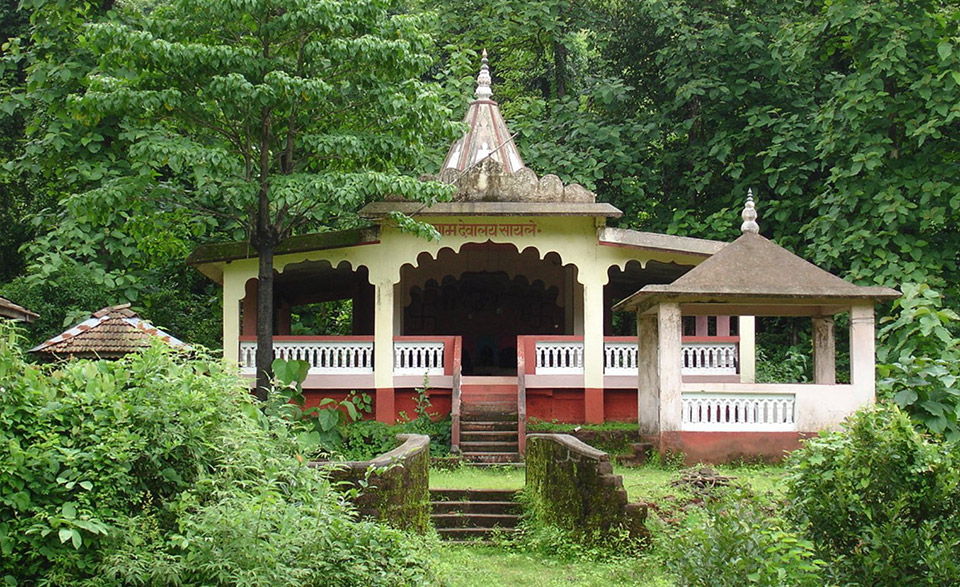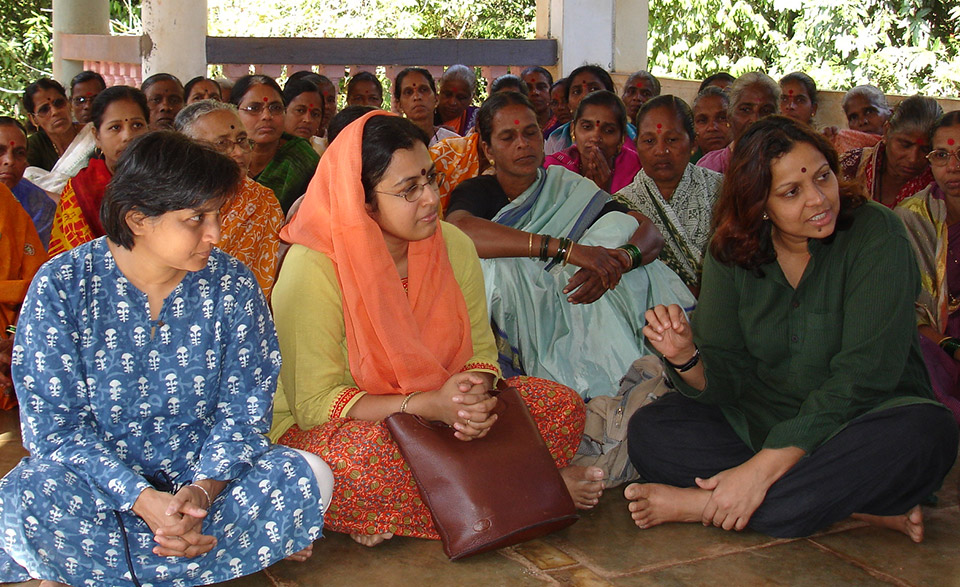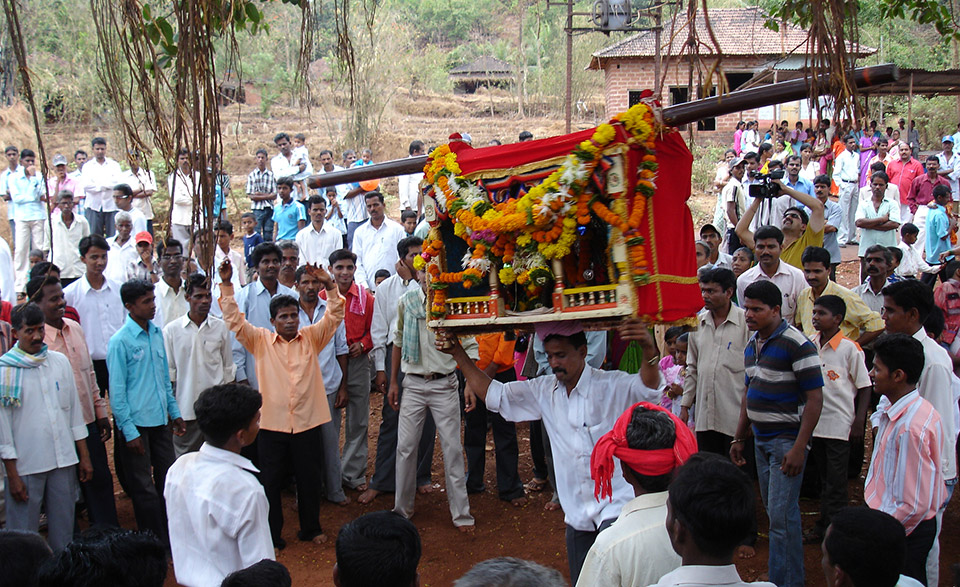Ghats noroeste da India no estado de Maharashtra é unha eco-rexión formando un hotspot de biodiversidade global. A biodiversidade da rexión é complementado por unha gran diversidade de tradicións locais na rexión. Case todas as aldeas na rexión Sahaydri-Konkan ten polo menos un bosque sagrado, cunha superficie que varía de uns poucos centos de hectáreas. Bosques sagrados sobrevivir por moitos centenares de anos, e hoxe funcionan como reservorios de biodiversidade albergar moitas plantas e especies de animais como unha rede remendada de vida salvaxe relativamente intactas.
Ameazado.
Ameazas
Ameazas á bosques sagrados derivan principalmente de aculturación e globalización. Pequenos bosques sagrados son moitas veces considerados como pequenas manchas insignificantes de bosques que dificultan o traballo de desenvolvemento. Moitos bosques sagrados foron destruídos, e só os templos feitos polo home foron preservados. Exemplos de razóns polas que estes bosques foron eliminadas son invasión, construción de estradas, pastoreo, a construción de presas e canles e de urbanización. Decisións para cambiar ou eliminar un bosque certo moitas veces veñen de aldeas veciñas, onde o aumento influencias occidentais causar un debilitamento das crenzas relixiosas que está estendendo por toda a rexión.
Visión
A rexión é susceptible de beneficiarse de forma apropiada de co-xestión dos bosques sagrados, polos depositarios locais, así como por outros actores rexionais. A forma máis prometedora de conseguir isto é re-establecer normas culturais e custodiantes empoderamento, poboación local e órganos de goberno tradicionais. Traballo a longo prazo é importante para crear alianzas sólidas entre as distintas partes. Apoio financeiro continuo é necesario xunto coa facilitación continua forte dos procesos implicados. Estes poderían ser un medio eficaz de transmitir os bosques sagrados ea súa importancia biocultural para as xeracións futuras.
Acción
AERF has worked specifically on up scaling and replication of the long-term management of sacred groves with community involvement in different villages. They have attempted to revive the traditional approaches to nature by raising locals’ awareness and by developing incentives for management. They have brought together stakeholders at both block and district levels.
Política e Dereito
The legal ownership of the groves is currently with the state revenue department.
The protection of sacred groves in the region cannot use the same legal system as that for forest protection because the rules for management are different. In some sacred groves, limited allowance of extraction is established for specific non timber forest products. Rules and regulations defined by the ancestors are not written down, and are sometimes twisted for short term benefits.
Custodiantes
Traditional conservation practices such a sacred forests are an important component of the landscape in three districts of the north Western Ghats Maharashtra state. The groves are mostly owned by villagers who are still able to survive on their lands without having to develop their sacred groves. Management of the sacred grove including religious functions and protection is supervised and monitored by a group of village elders. The cultural significance is high, and most of the community festivals are celebrated in the temple situated in the sacred grove. Some of the groves also function as burial grounds and crematoriums and some are abodes of ghosts and deities. Except for water, people do not use any resources from these groves as is done in other regions in India.
Alianza
The Applied Environmental research Foundation (AERF) has been working on sacred groves conservation in North Western Ghats for over 15 anos. In Sangameshwar block, AERF has revived the tradition of sacred groves and involved local people in planning as well as implementation for long-term conservation of the sacred groves.
Ferramentas de conservación
Co-management is one of the important starting points, facilitating mutual understanding between parties. Stakeholder sessions have been organised, making different groups enthusiastic and curious about the sacred groves. The media play an important role in building consensus and awareness about environmental issues, but they could discuss more topics on sacred groves. AERF stimulates local communities to revive their ancient traditions through participatory work. They used local traditional myths, dance, song and ceremony to develop a common understanding of villagers’ cosmovision, restoring it where needed to support the maintenance of the sacred groves. Adicionalmente, they make biodiversity inventories to reveal the gravity of the situation.
“Decisions such as seeking permission for using the sacred groves resources for the village well-being are generally taken in the temple”.
- Archana Godbole, Director of the Applied Environmental Research Foundation.
- Godbole, Sarnaik, Punde, (2010) Culture-based conservation of sacred groves: Experiences from the north Western Ghats, India, en Verschuuren, Salvaxe, McNeely e Oviedo, Sacred Sitios Natural: Conservación da natureza e da Cultura, Terra de dixitalización, Londres.
- Applied Environmental Research Foundation in Pune, India: www.aerfindia.org








